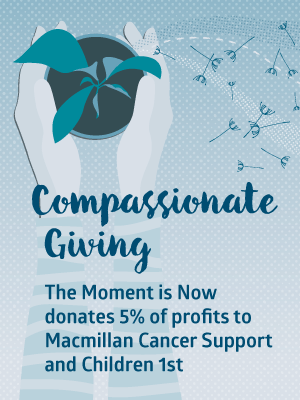The memories of kindness meditation…
…your first step in exploring kindness
Here’s the final post in our series about key mindfulness practices, designed to help you get started with mindfulness or refresh your existing practice. In this post, you’ll find:
- An introduction to the memories of kindness meditation
- A guided audio for you to follow, to help you learn the technique
- Top tips on how to get the best out of this exercise
- Links to other free guided audios in this series.
Why this practice?
Practising kindness towards other people—and, just as importantly, towards yourself—helps you develop one of the key skills of mindfulness practice: your ability to be non-judgemental.
As your mindfulness practice develops, you’ll begin to become more aware of the thoughts passing through your mind. You may notice that some of these thoughts are critical of yourself or others. Maintaining an attitude of kindness will help you be less judgemental. You can use the memories of kindness meditation to start developing the kindness attitude.
What happens in this practice?
During this meditation, you’ll begin to investigate the differences between:
- Offering kindness to others
- Being able to receive kindness from others, and
- How you relate to being kind to yourself.
You’ll explore the different thoughts, feelings and physical sensations you notice while you recall times when:
- Someone was kind to you
- You were kind to someone else
- You were kind to yourself.
Before you practice
It’s not unusual for human beings to be somewhat hard on themselves. So, when you first try directing kindness towards yourself, you might notice an inner resistance. Try not to be concerned if this happens. As best you can, simply accept where you’re starting from and remind yourself that this is normal and you are okay. As your kindness practice develops over time, you’ll learn how to nurture it as it grows, gradually developing an open friendliness towards yourself.
When you’re ready to try this meditation
- Choose a quiet space in which to do this practice. As best you can, choose a time when you won’t be disturbed.
- For this practice in particular, try to sit or lie in a position that’s kind to your body, without giving it any undue stress.
- Allow yourself around 15 minutes for this exercise.
Listen now

Top tip
Bring more kindness into your life:
- At the start of each day, imagine moments of kindness happening in the day ahead of you.
- During the day, be on the lookout for moments of kindness in everyday life. They may be as simple as someone passing on a compliment, listening attentively to another person’s point of view, or opening a door for someone struggling with lots of shopping.
- Write a list of the things that nourish you—perhaps spending time on your favourite hobby, getting plenty of sleep, or giving yourself permission to ‘do nothing’ and simply ‘be.’ Or how about a visit to your favourite gallery, park or book shop, or coffee with a friend? Using your list as inspiration, see if you can be kind to yourself at least once a day!
- At the end of the day, recall moments of kindness you’ve noticed during the day. Perhaps jot them down in a kindness journal.
How much time do you have today?
Can you fit in a 20-minute practice or would a 3-minute practice work better for you? Take your pick from these free guided audios from our Mindfulness Basics series. Be kind to yourself by bringing some mindfulness into your day—however busy it might be.
Remember to read the hints and tips for your chosen practice before you start!
- For a 3-minute practice, see Part Five, The three-minute breathing space.
- For a 7-minute practice, see Part Four, Mindful movement.
- For a 10-minute practice, see Part One, Settling the mind.
- For a 15-minute practice, see Part Three, Mindfulness of the senses.
- For a 20-minute practice, see Part Two, The body scan.









